
Wrocław - Market Square and Ostrów Tumski
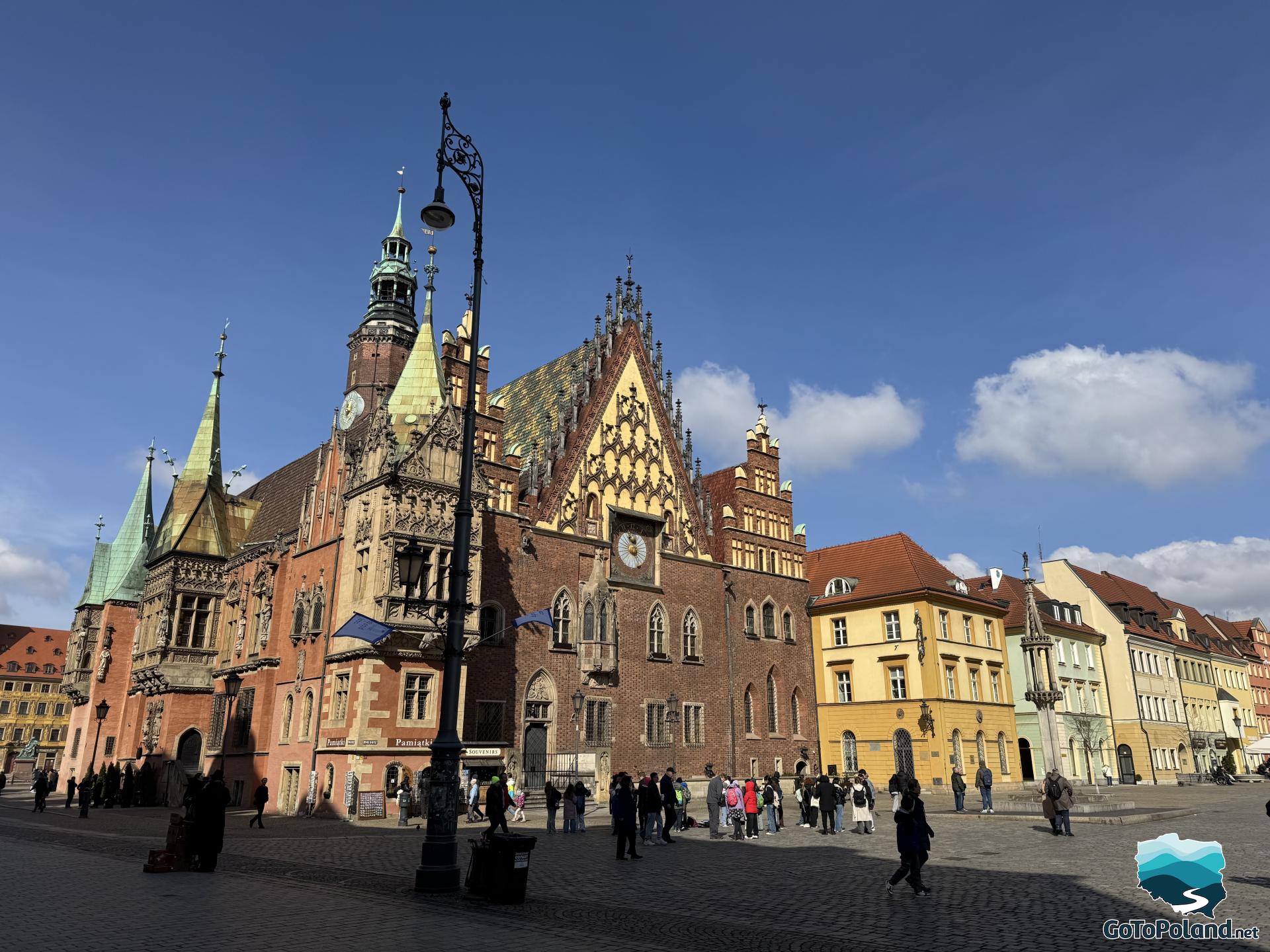
How far is it from Warsaw to Wrocław?
The distance from Warsaw to Wrocław is 348 km.
Wrocław is one of the oldest, largest and most beautiful cities in Poland. It's the capital of Lower Silesia. Since I live only 80 km from Wrocław, I am there quite often. In this post I will focus mainly on the Wrocław Market Square and Ostrów Tumski, although the city has a lot to offer in terms of art, culture and history.
When visiting Wrocław's Market Square, you can't pass by the magnificent Old Town Hall. It is a late Gothic building that currently houses the Museum of Bourgeois Art. It's decorated with magnificent bay windows, has a 66-meter-high tower and a famous astronomical clock, one of the oldest of its kind in Europe. It consists of five clock faces! The tower houses the oldest clock bell in Poland from 1368 (it's older than the famous Sigismund Bell in Krakow).

Right next to the market square is the (from 1523 the first Protestant church in Wrocław), inside which a Renaissance pulpit from 1579–1581 has been preserved.
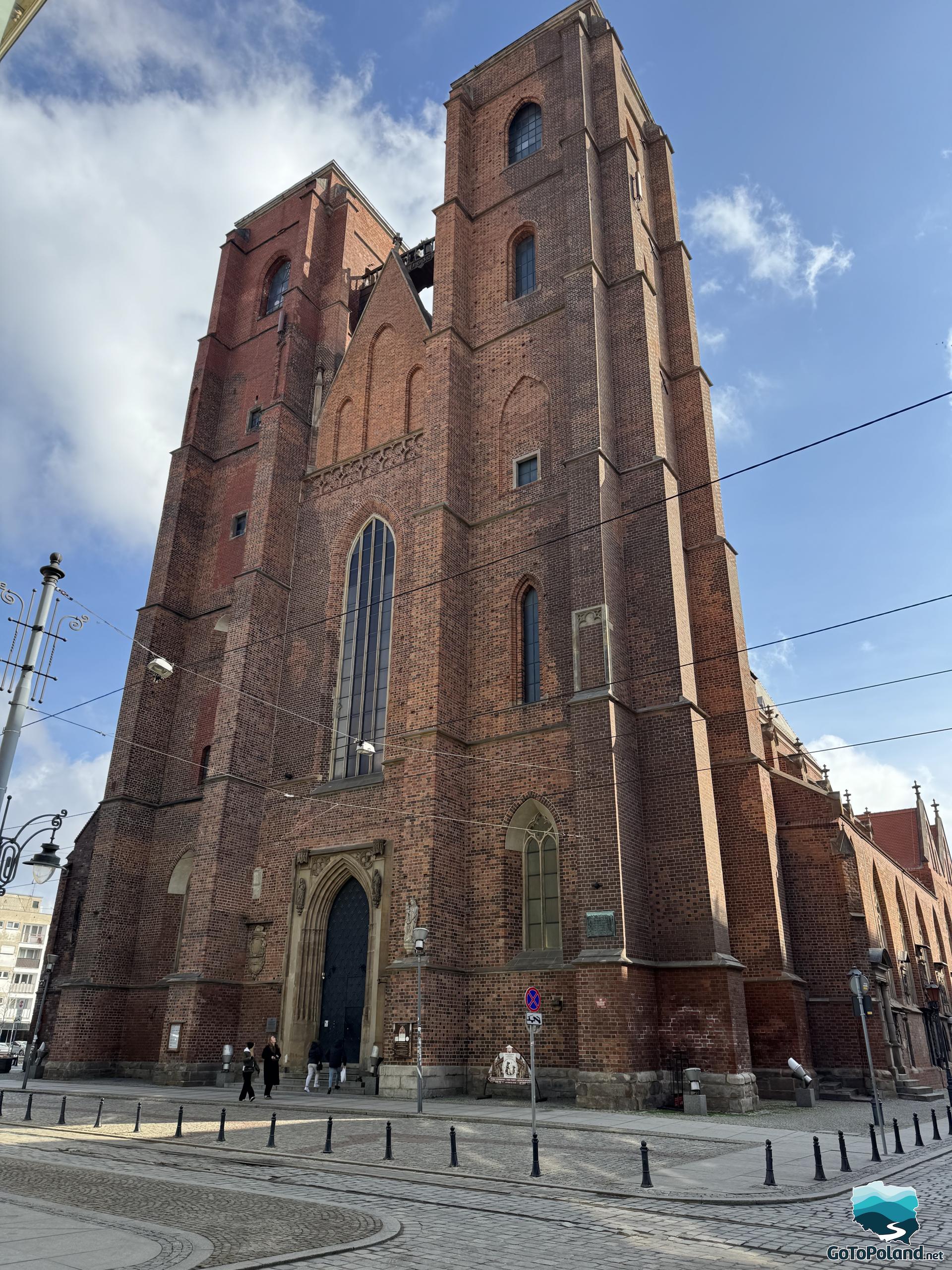 | 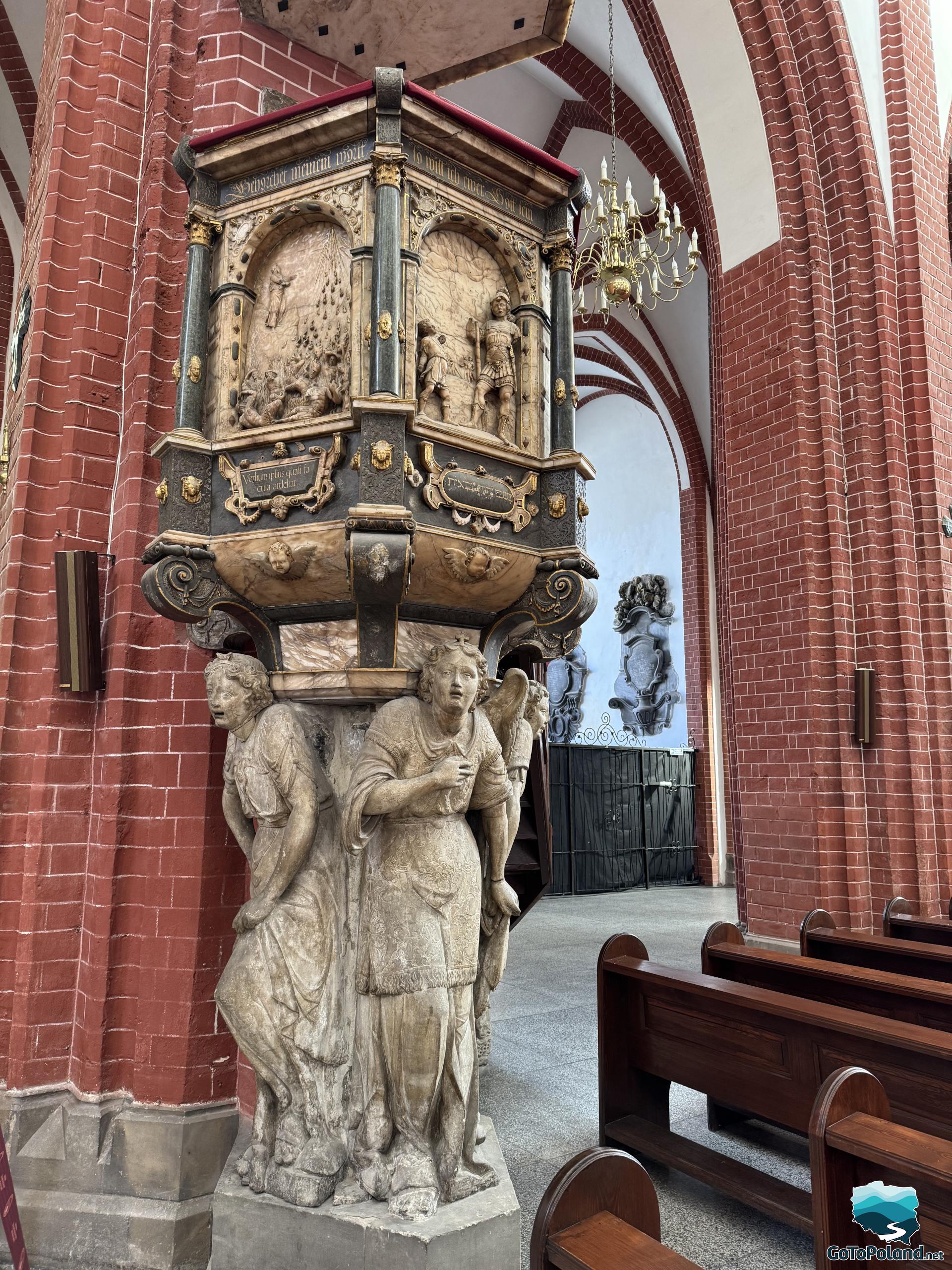 |
It's especially worth going to the Bridge of Penitents, which is 45 m high and offers a beautiful view of the Wrocław Market Square. The bridge connects the towers of the Cathedral of St. Mary Magdalene. There are several legends associated with the bridge, such as the one that young women were once locked up on the Penitent Bridge, who instead of starting a family and living in fidelity to one man, led a debauched lifestyle. As a punishment, the young women were to sweep the bridge and weren't allowed to leave it. Some of the unfortunate women committed suicide by throwing themselves off it.
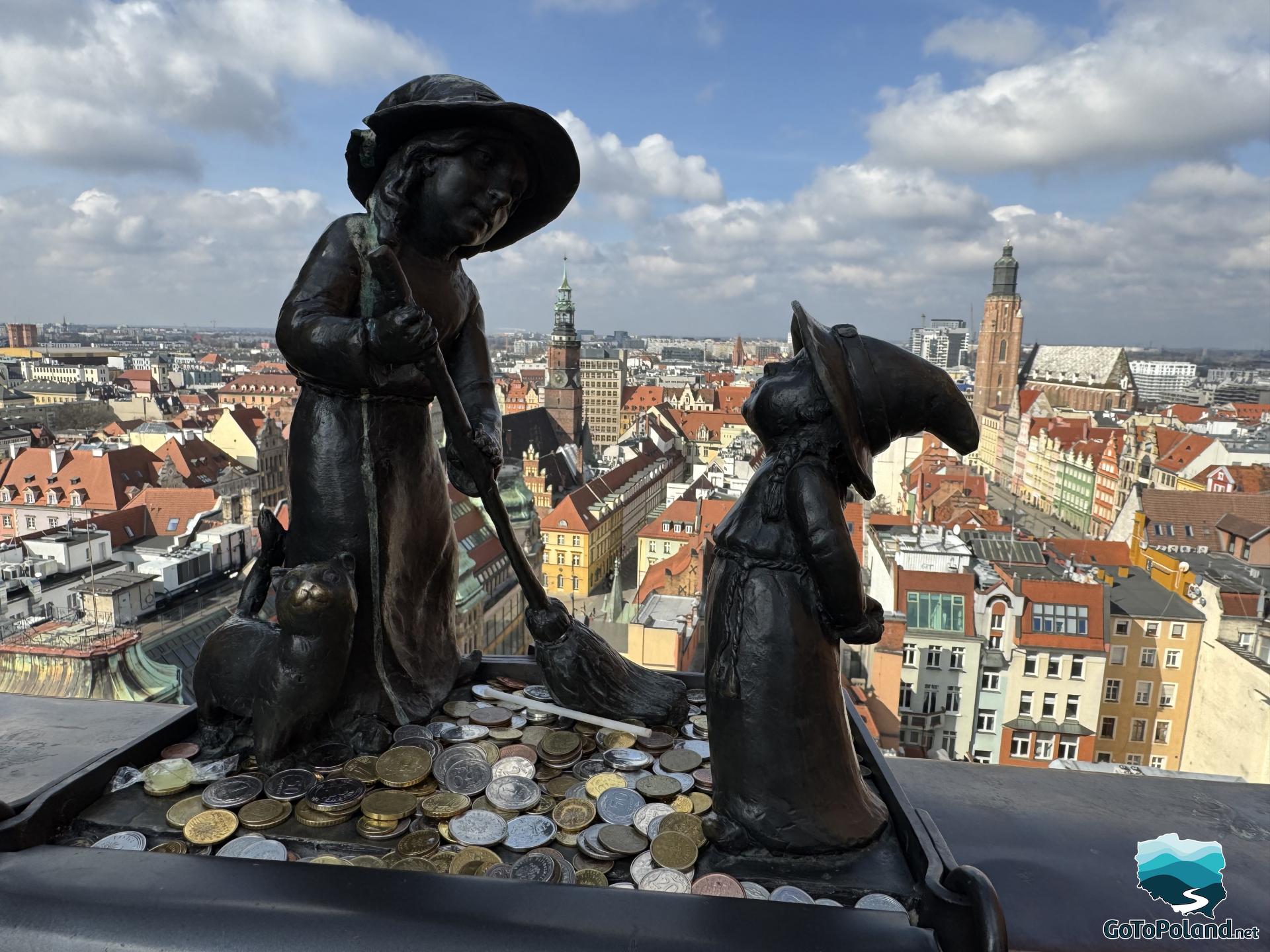
Historic tenement houses on the Wrocław Market Square. The largest of these tenement houses is the former Louis Lewy Department Store, opened in 1904 (The owner of the building was the Louis Lewy Jr. company, which produced and sold women's coats). The tenement house on the left, with a brick facade, is the Tenement House Under the Golden Dog.

The tenement house on the right (with the inscription “Biblioteka”) is the Tenement House Under the Golden Palm. In the background, the tower of the Garrison Church of St. Elizabeth of Hungary is visible.
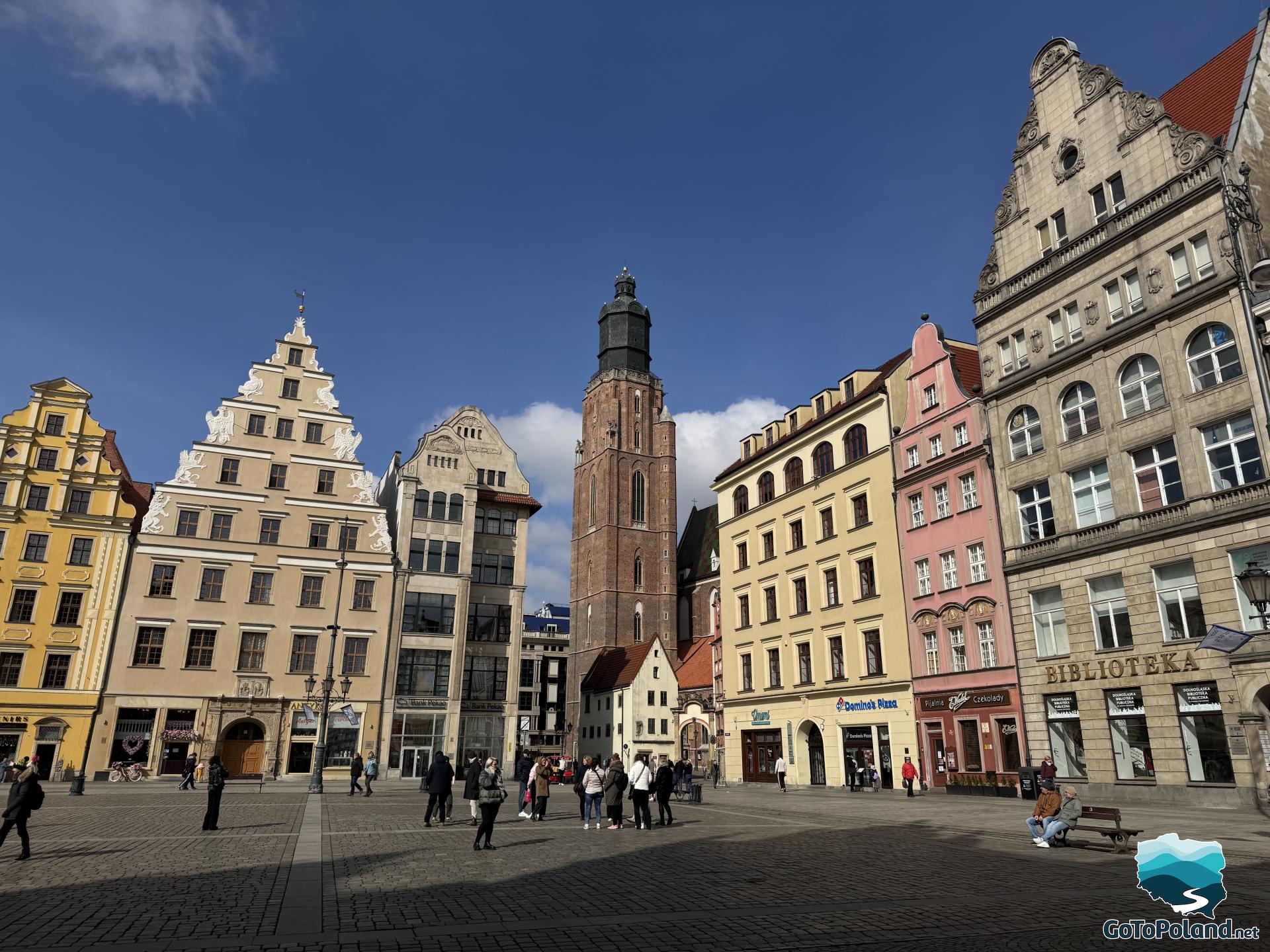
The "Zdrój" fountain is a rectangular basin 22.5 metres long and 2.3 metres wide. It contains 29 panes of insulated glass – one panel weighs 450 kg.
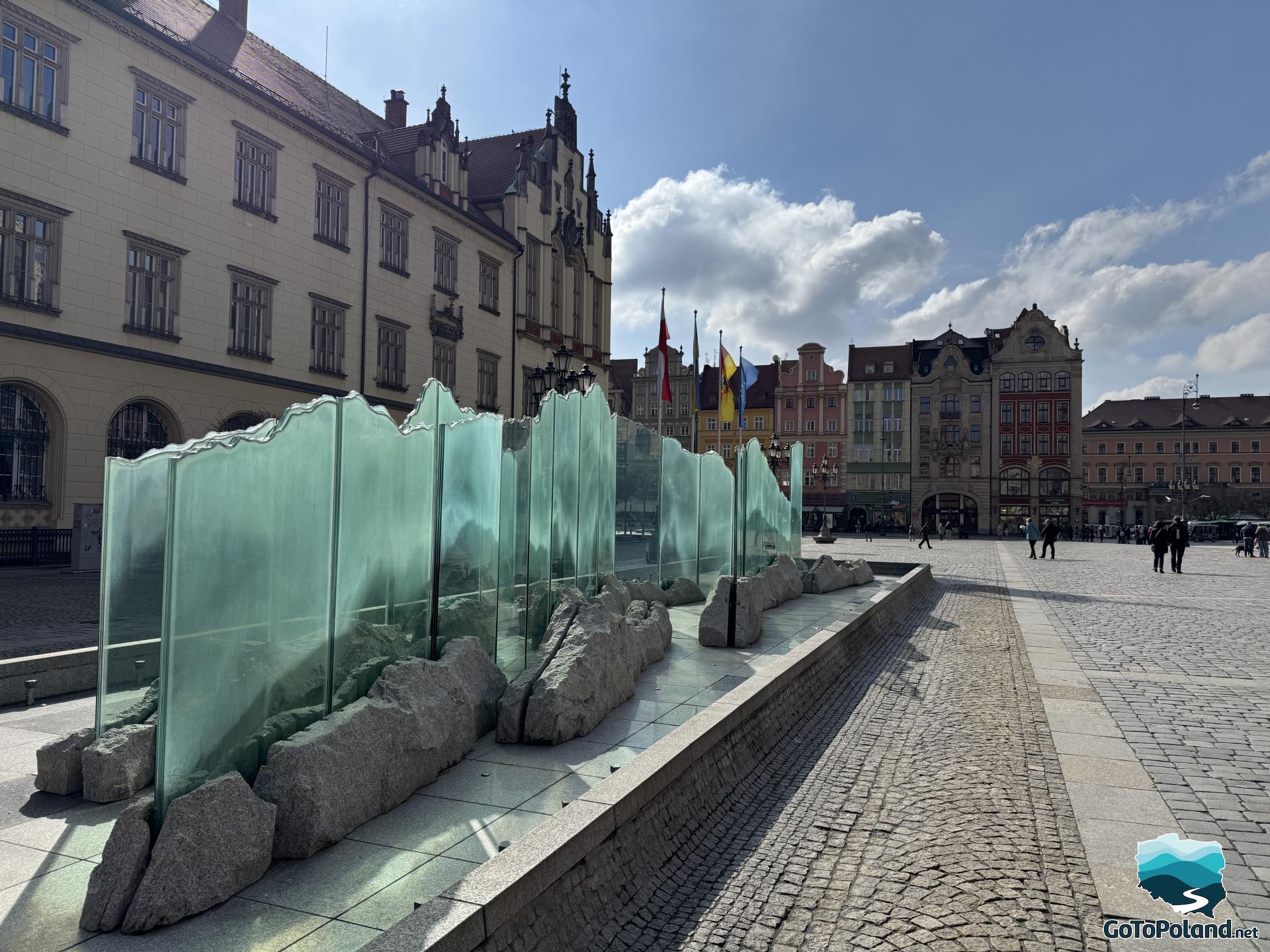
My husband looks at the Dwarf Leszko from Wrocławca (Leszek the Guitarist). The Dwarf is holding a guitar in his raised hand, and on his shirt is written: Guitar Guinness Record. It stands opposite the city hall on the Wrocław market square, facing the stage where the Wrocław Guinness Guitar Record has been broken every year for the past fifteen years. The event is organized by Leszek Cichoński, in whose honor the dwarf was created.
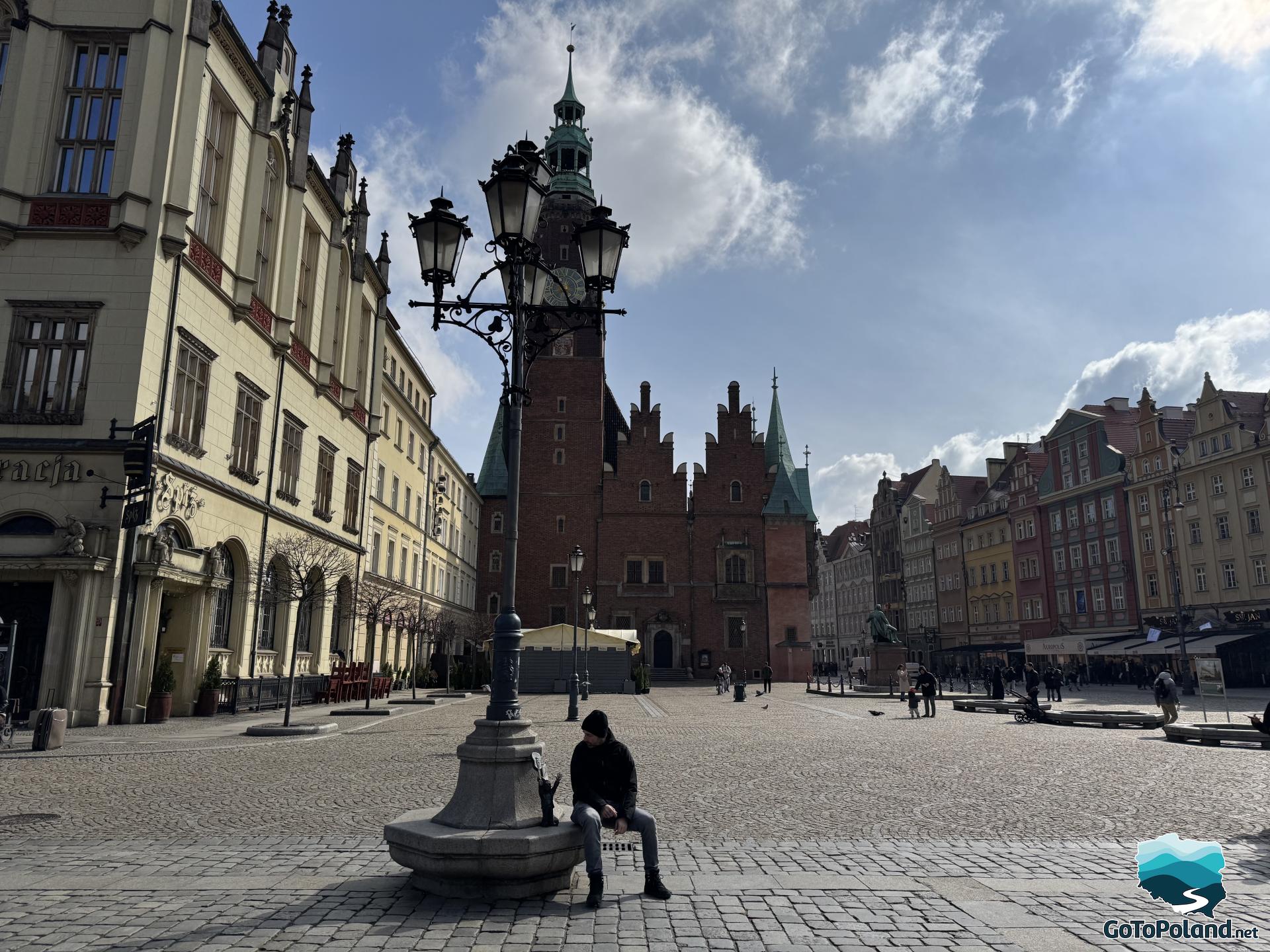
Monument to Count Aleksander Fredro, who is considered the most outstanding comedy writer in the history of Polish literature.
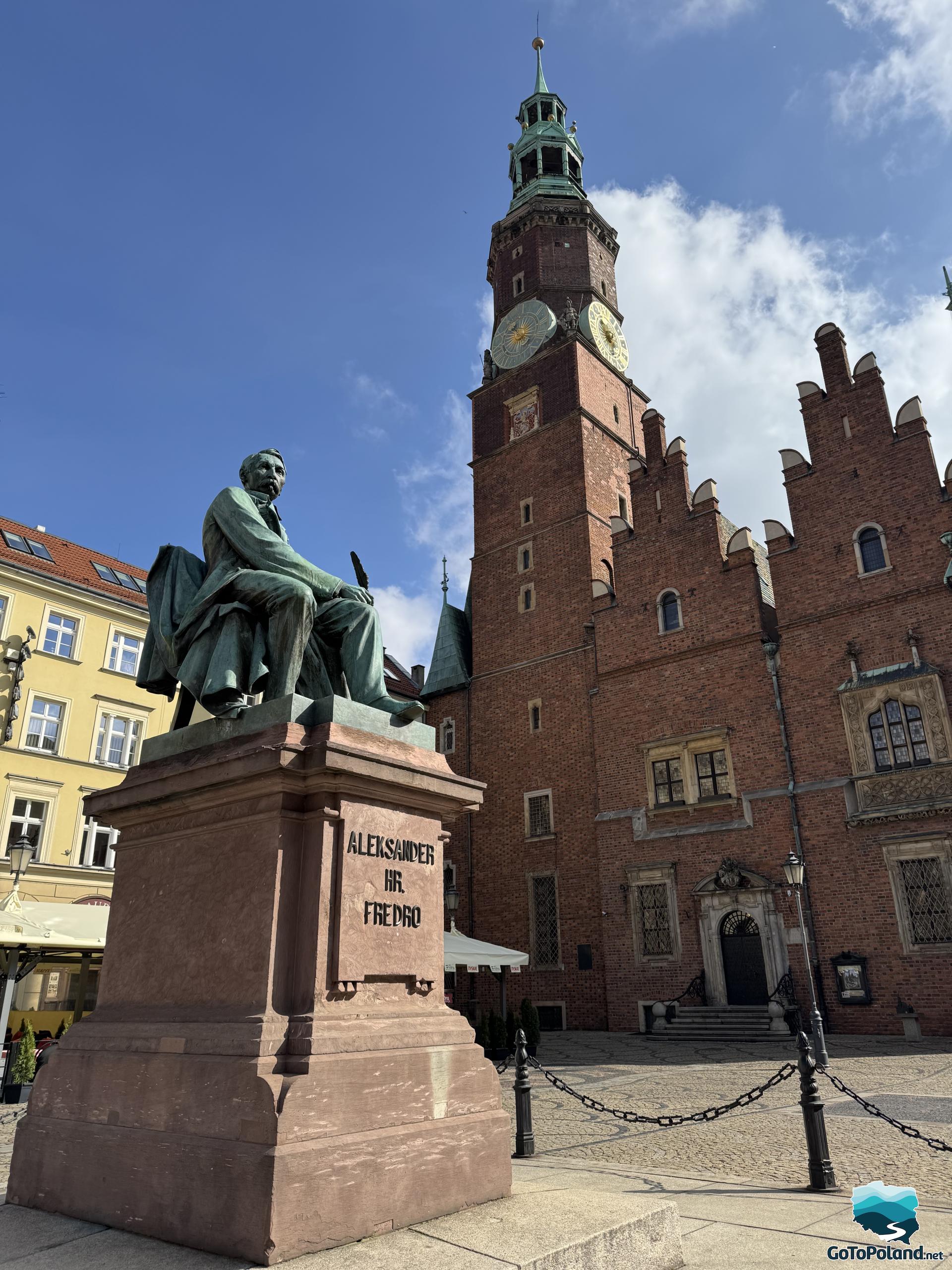
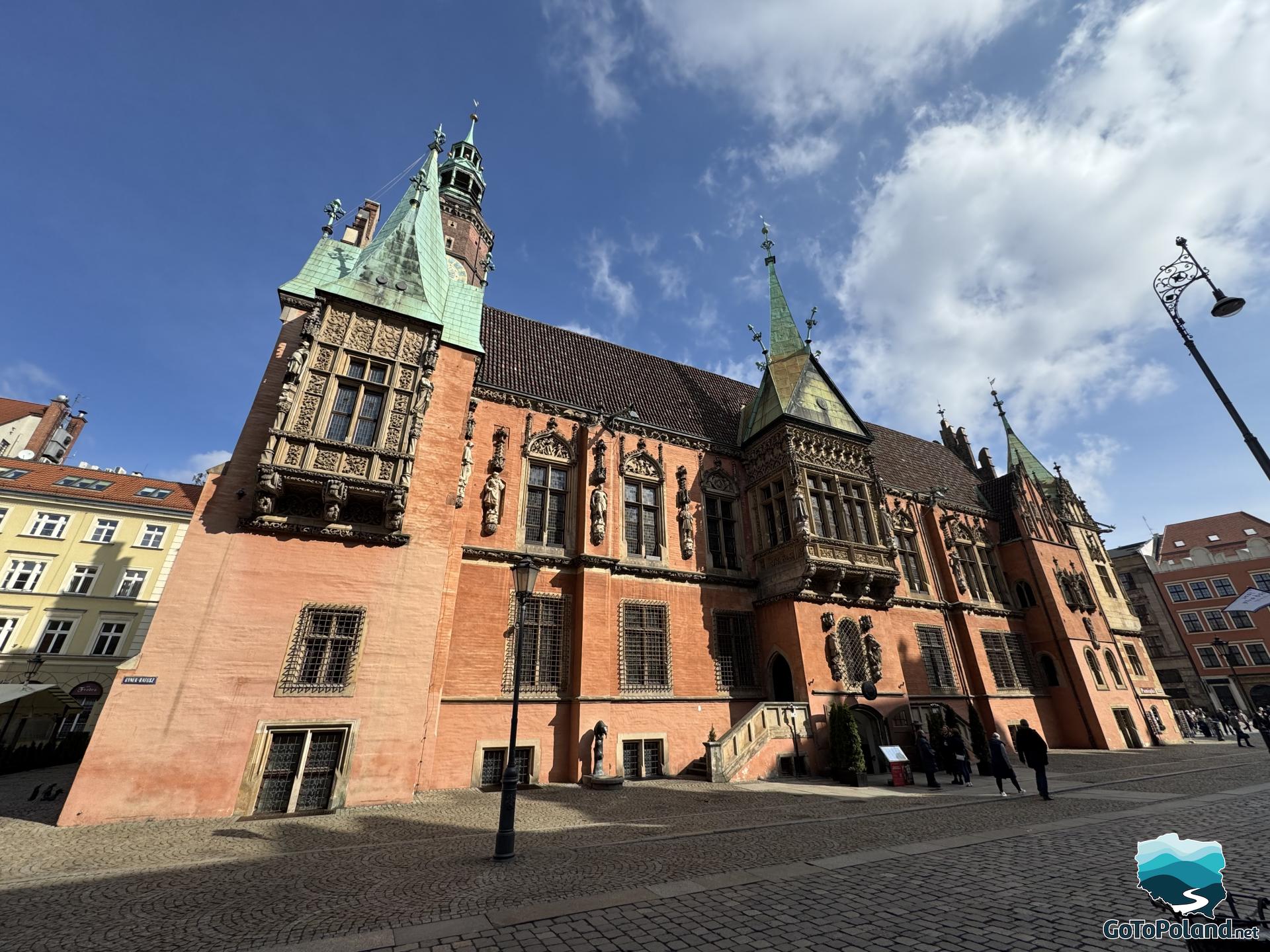
The Cathedral of St. Vincent and St. James in Wrocław, which was initially a church, was founded by Henry the Pious in the 13th century. In the last days of World War II, the church suffered heavy damage, including the collapse of the tower, and with it part of the side wall and vaults. Reconstruction took over 40 years.
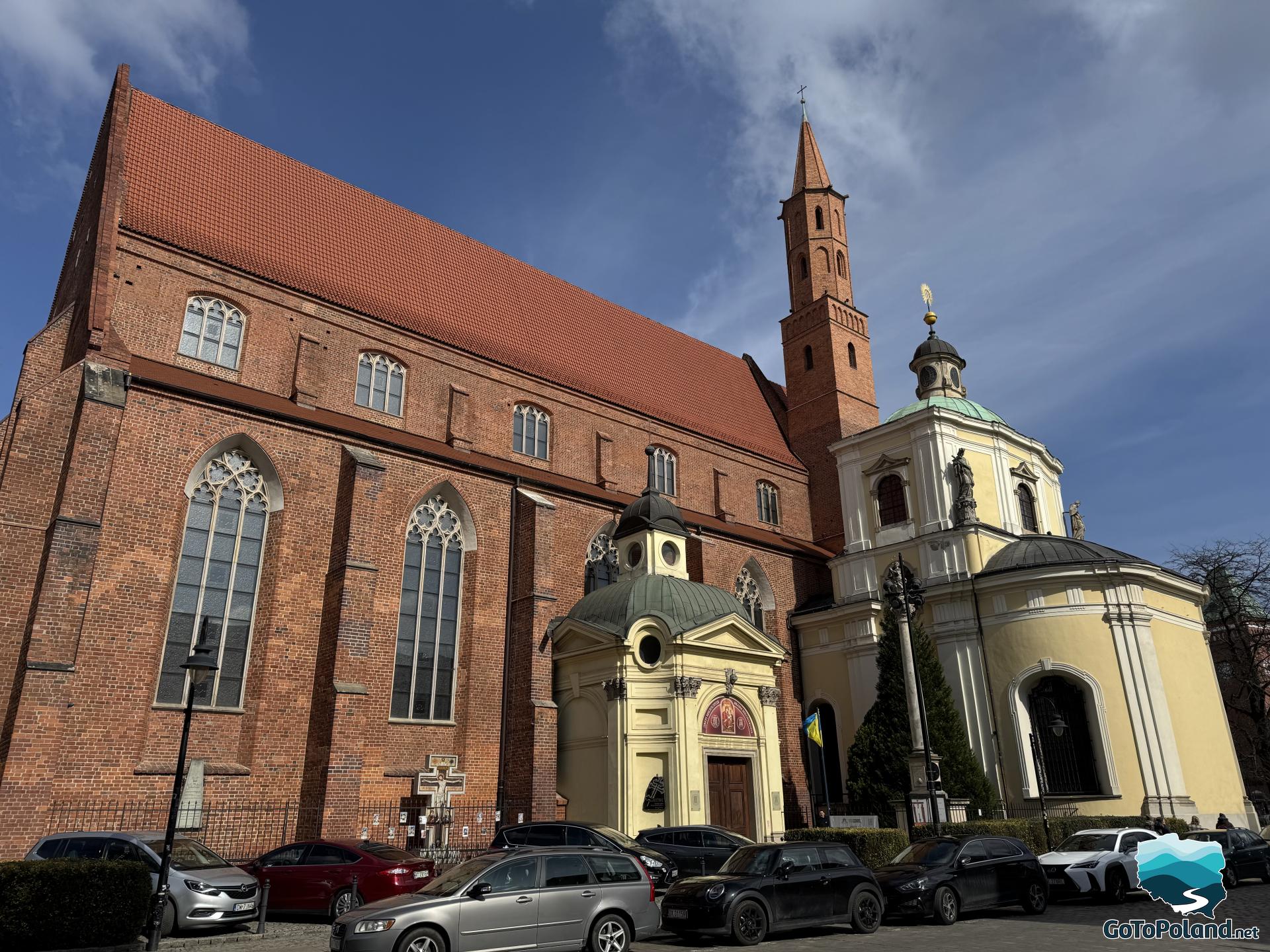
View from the Sand Bridge to Daliowa Island and the Oder River.
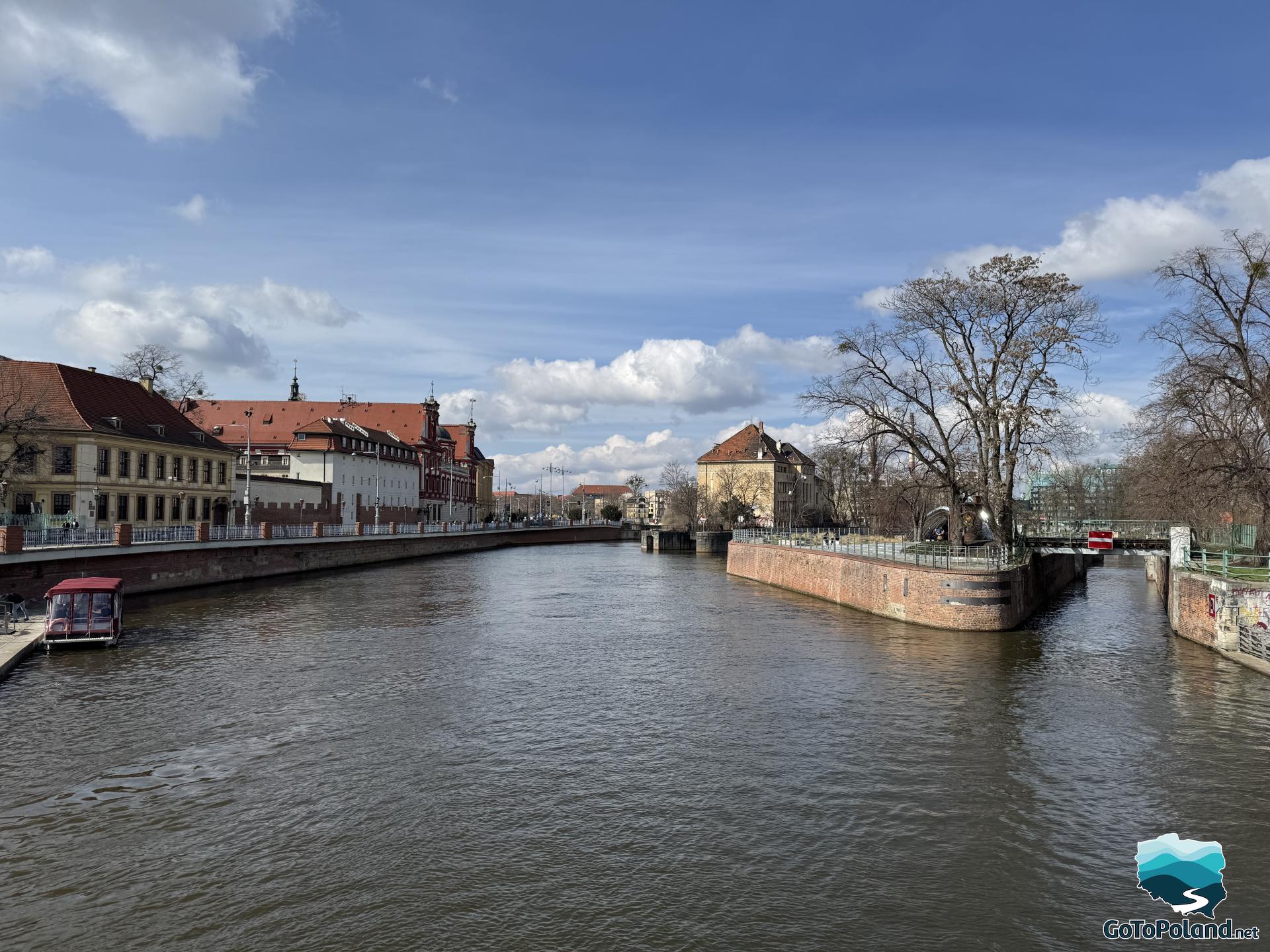
The Market Hall was built at the turn of 1908/1909. At that time, it was a very modern and original reinforced concrete structure. The main author of the Hall's design, Richard Plüdemann, had been a building advisor for Wrocław since 1885 and for 23 years had a decisive influence on the city's architecture. The building area of the Market Hall is 3,591 m2, and the volume is 60,505 m3. The building has a full basement and 3 longitudinal naves. Today, in the Market Hall you can buy fresh fish, meat and cold cuts from local producers, domestic and imported fruit and vegetables, bread and confectionery, flowers. There are clothing and accessory stalls, small catering and service premises: a shoemaker, a leatherworker, a watchmaker and a hairdresser.
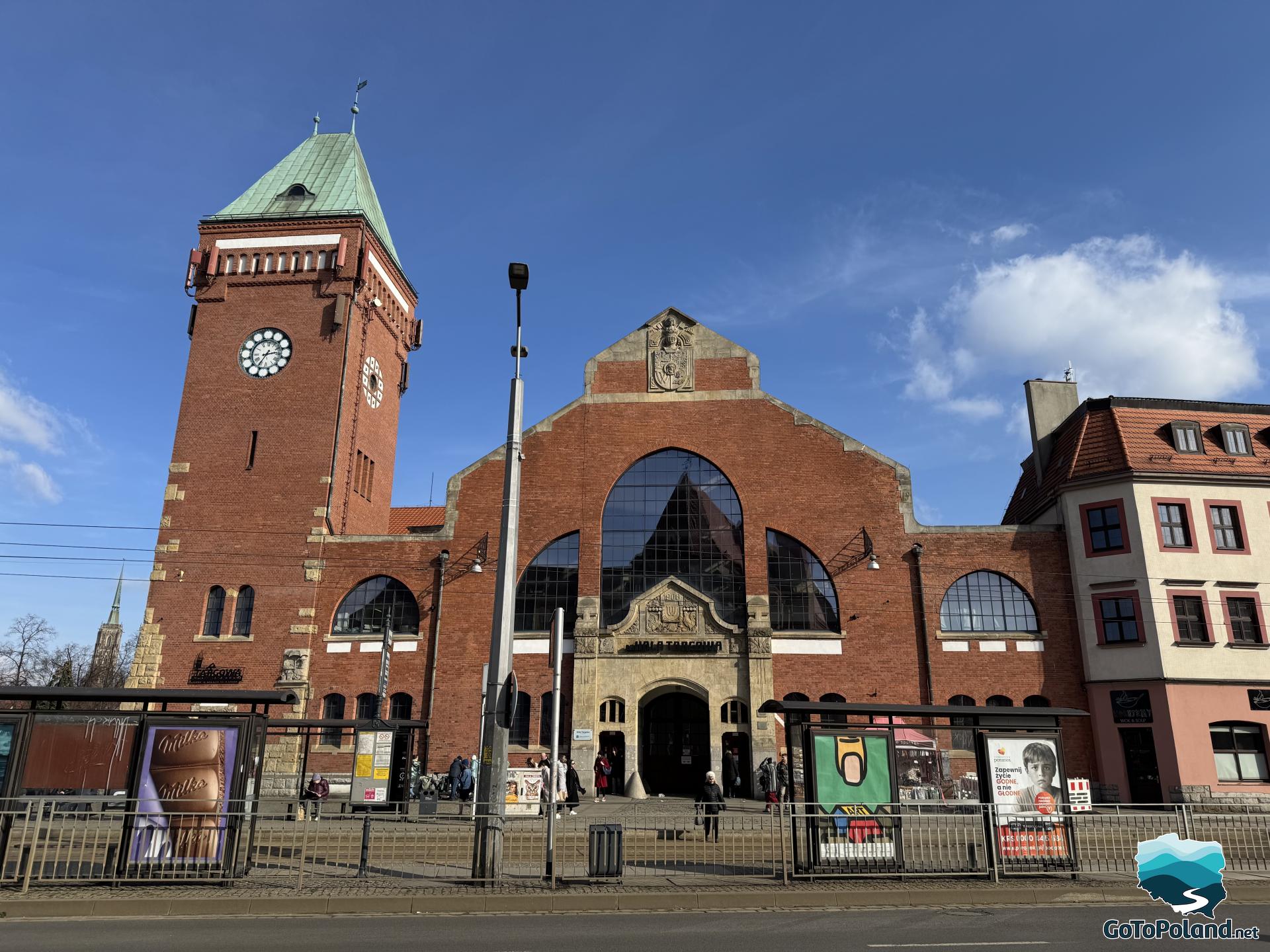
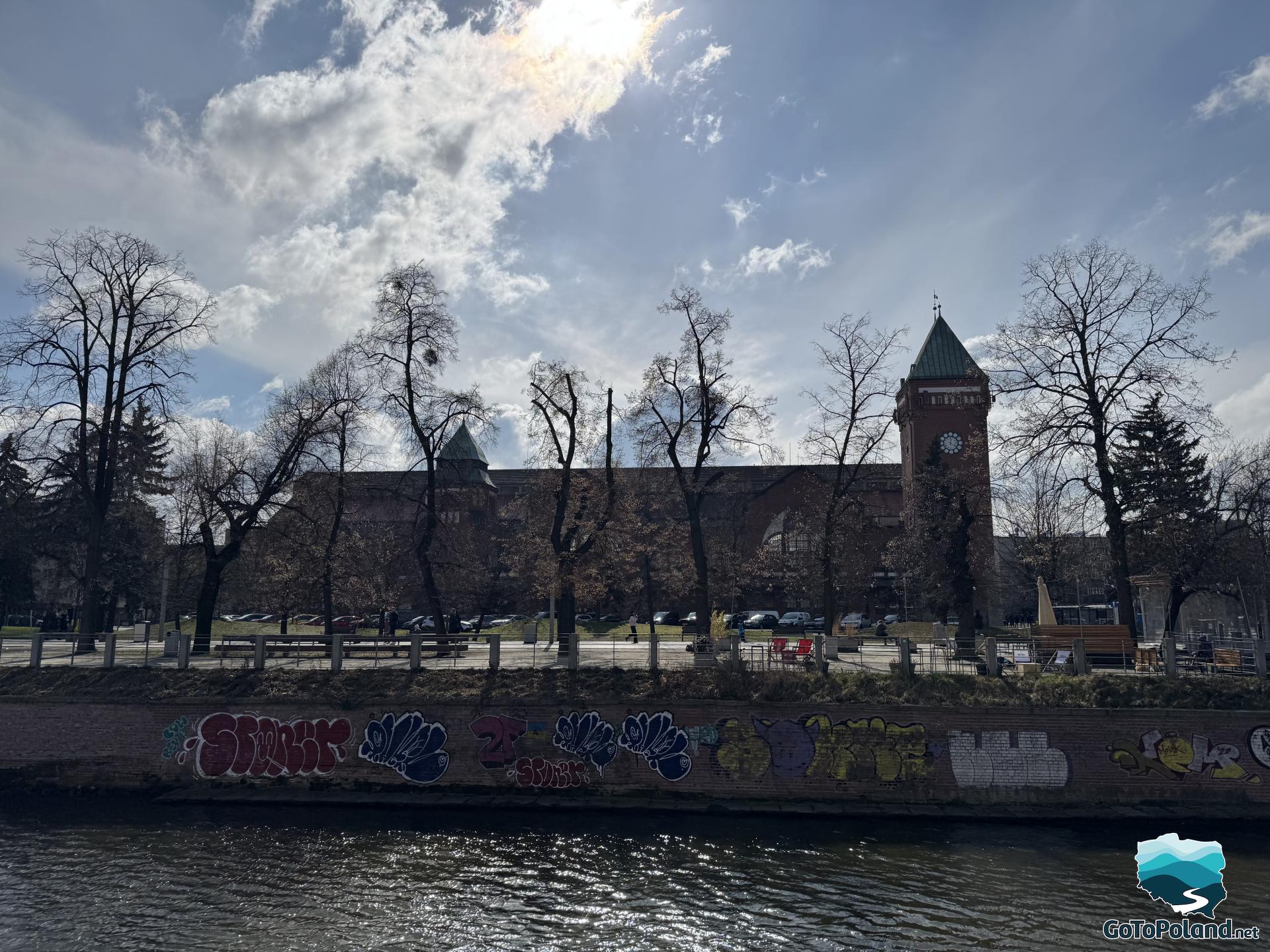
View of Ostrów Tumski - the oldest, historic part of Wrocław.
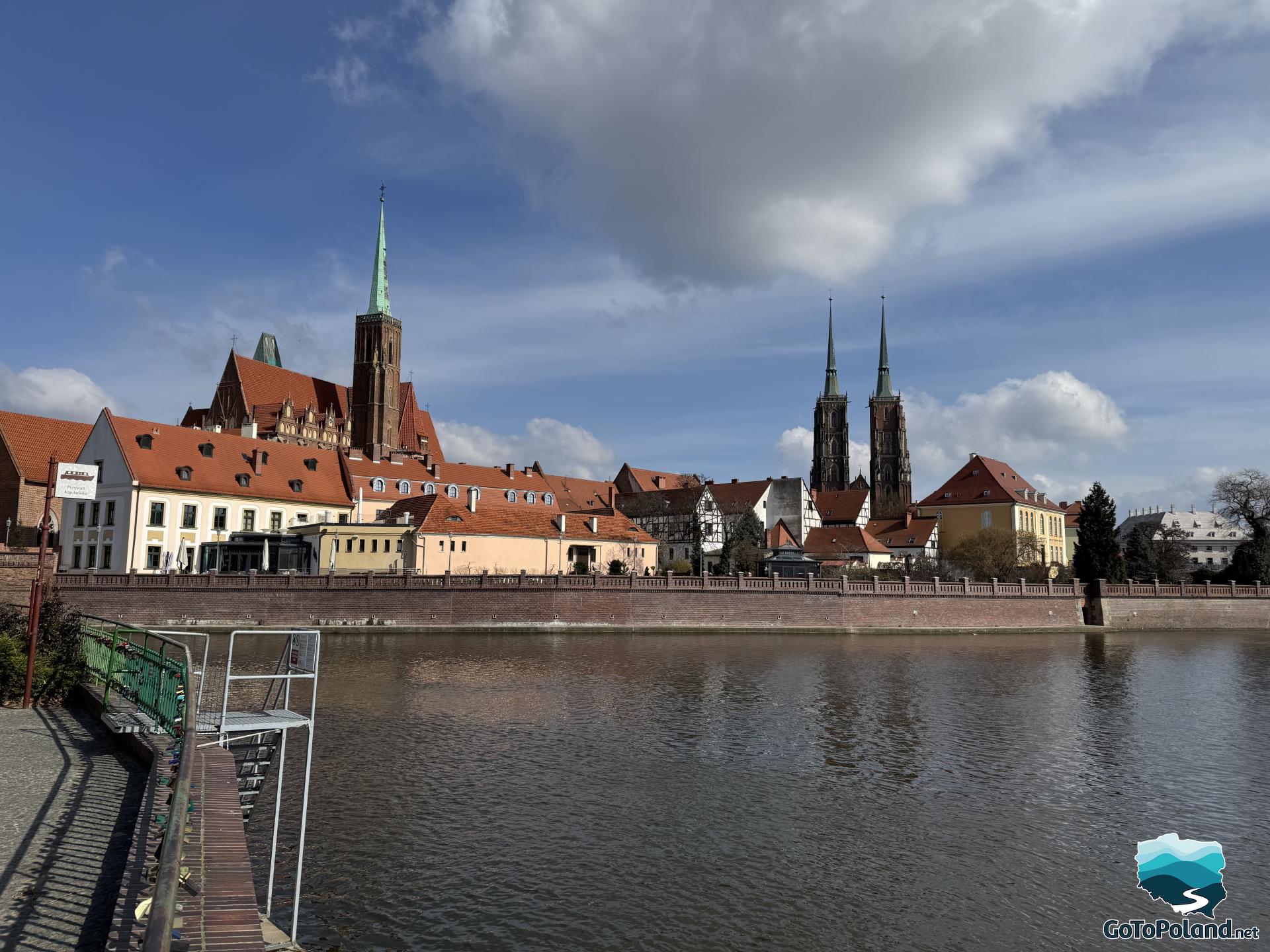
Once Ostrów Tumski was situated on an island. The castle on Ostrów Tumski, the seat of the first Piast dynasty, was probably founded in the 10th century.
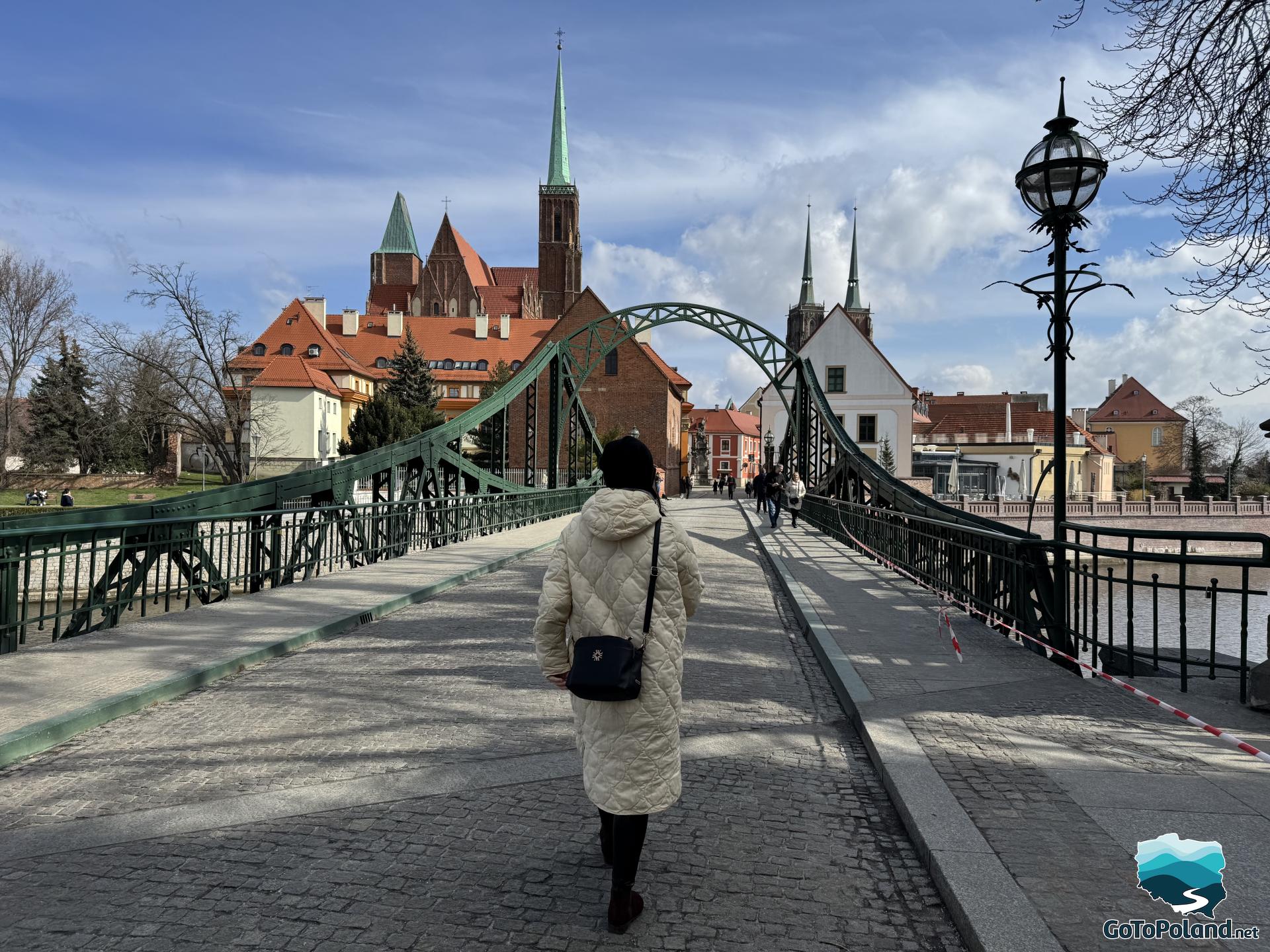
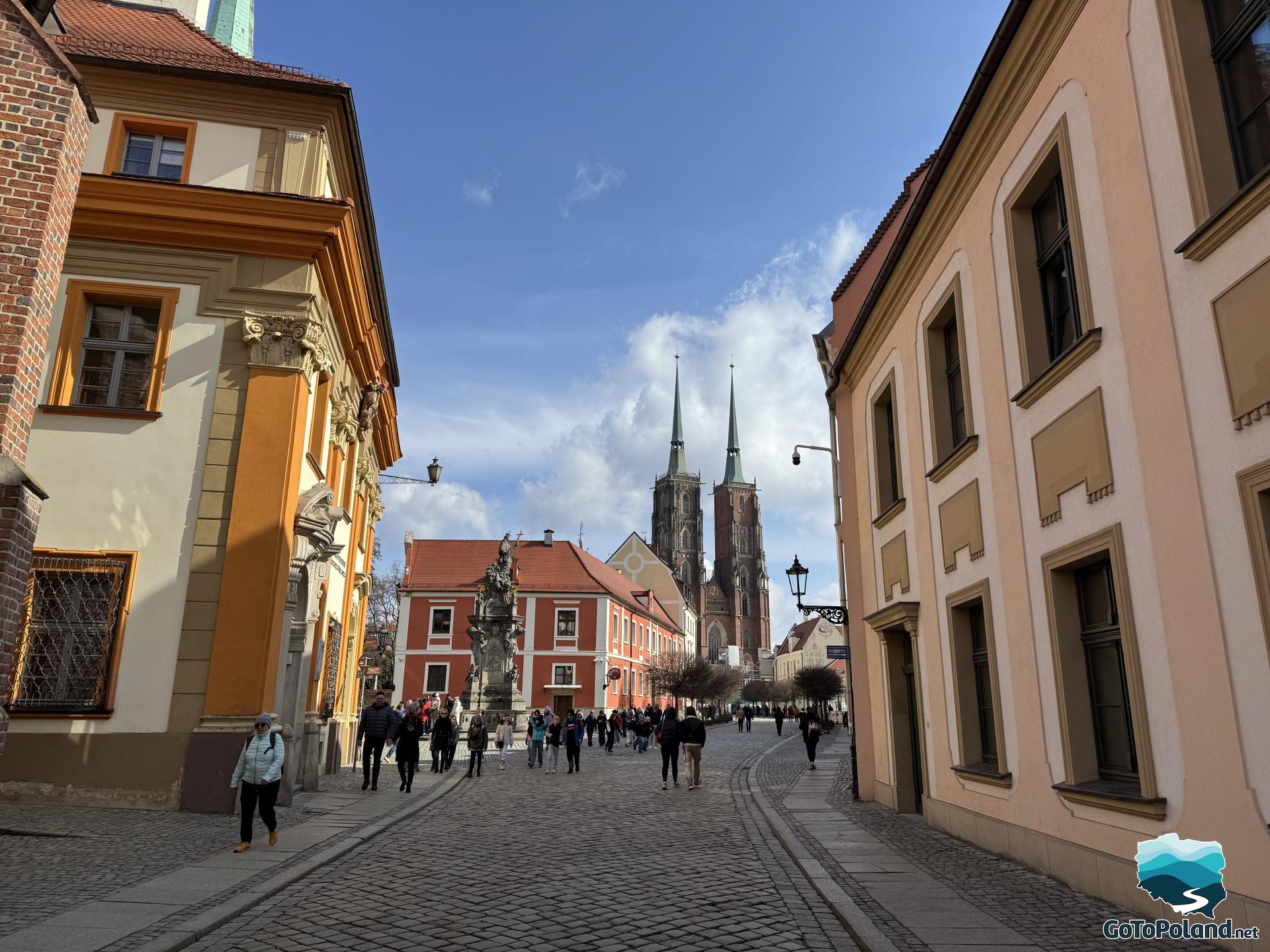
In the garden at the Archbishop's Palace there is a monument to Edmund Bojanowski, the founder of the congregation of the Sisters Servants of God.
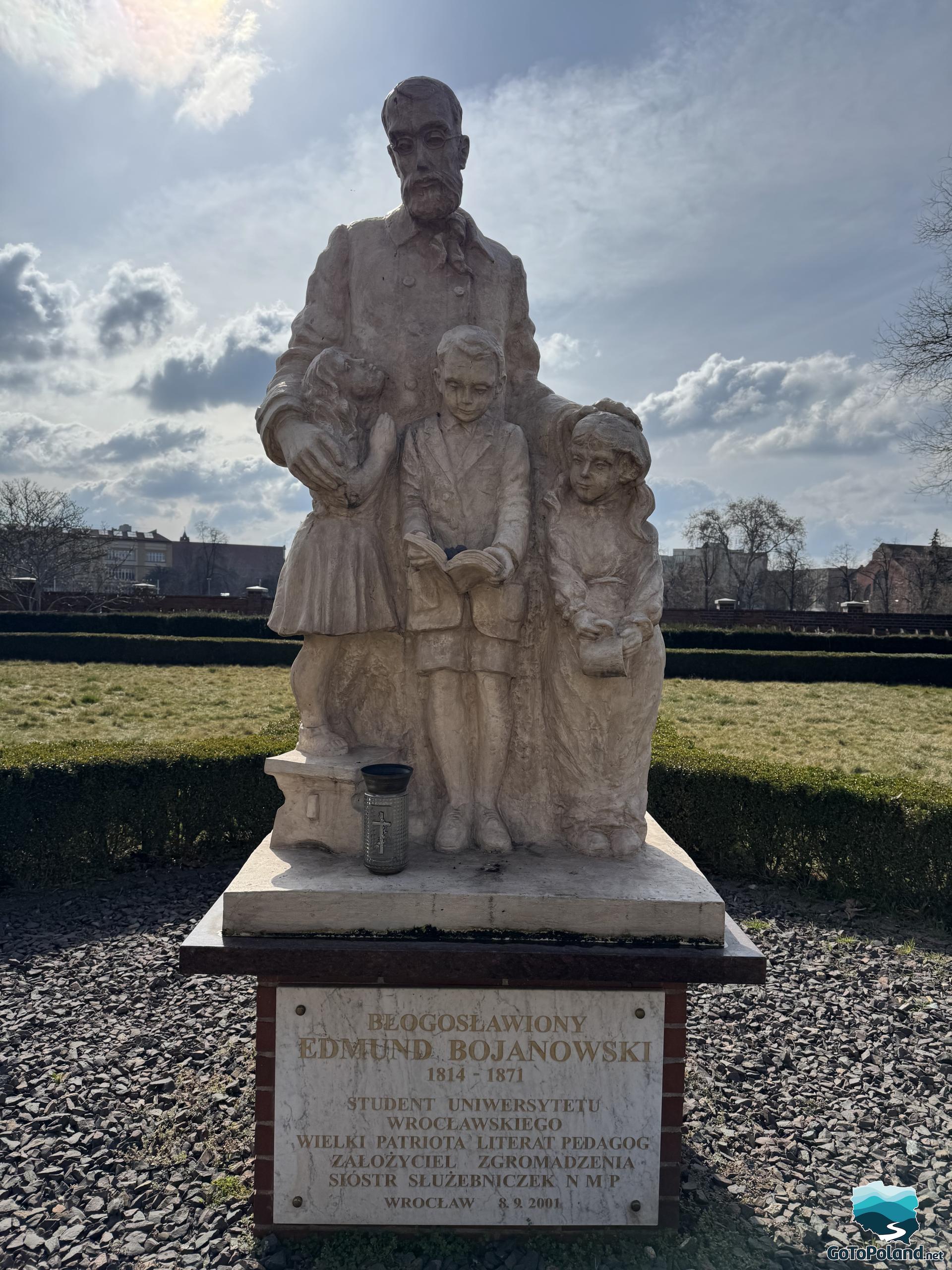 | 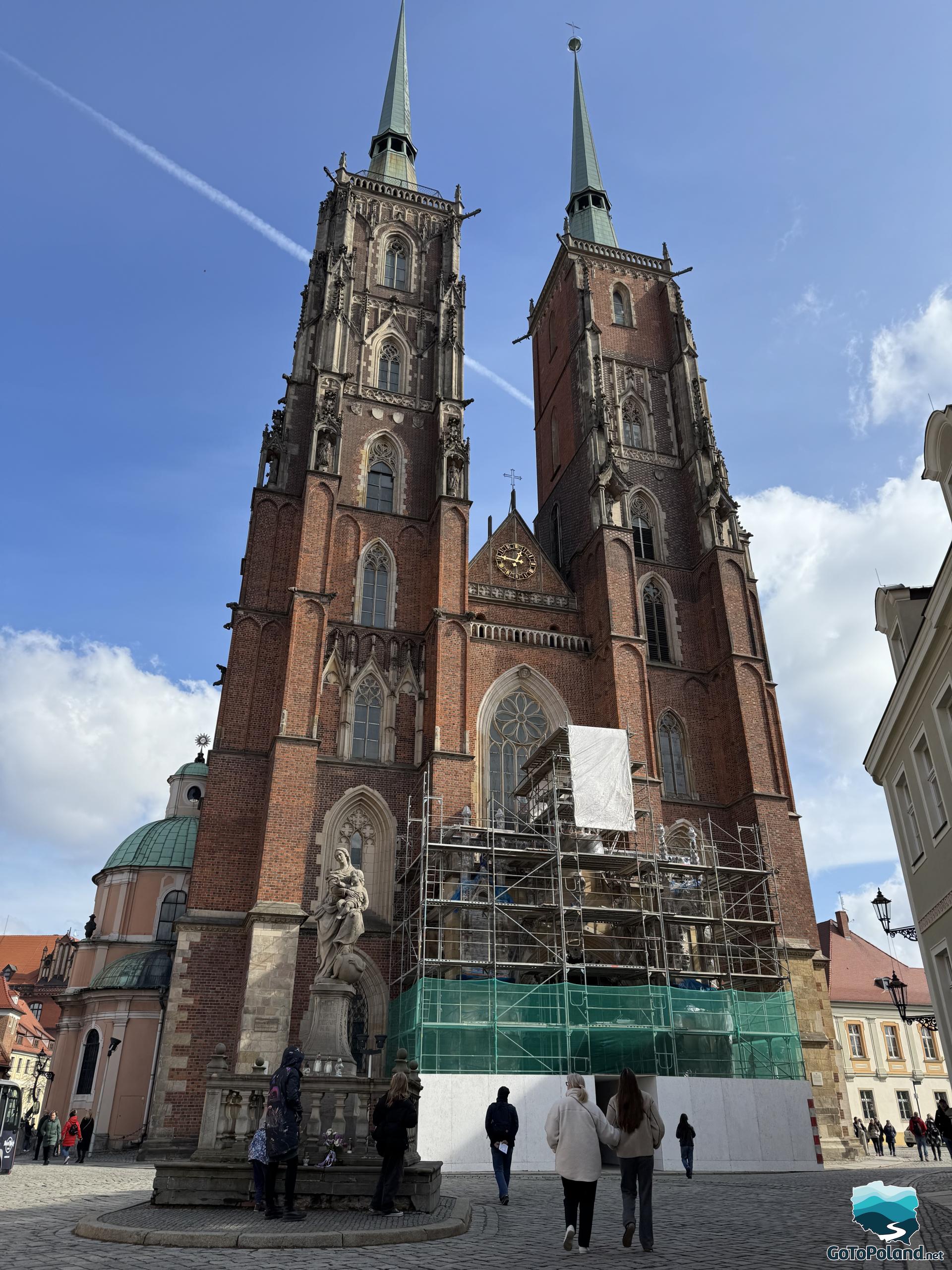 |
The Archcathedral of St. John the Baptist in Wrocław is a beautiful church. I was enchanted by its interior. The current cathedral was built in the 13th-14th centuries, on the site of three previous churches. It's a three-nave basilica, with a transept and a presbytery. The main nave is covered with a cross-ribbed vault, while the side naves are covered with a cross-barrel vault. The cathedral has two towers, each 98 meters high. It is considered the first fully Gothic temple on Polish soil.
The Wrocław Cathedral can be visited all year round (visiting the cathedral is not possible during services).
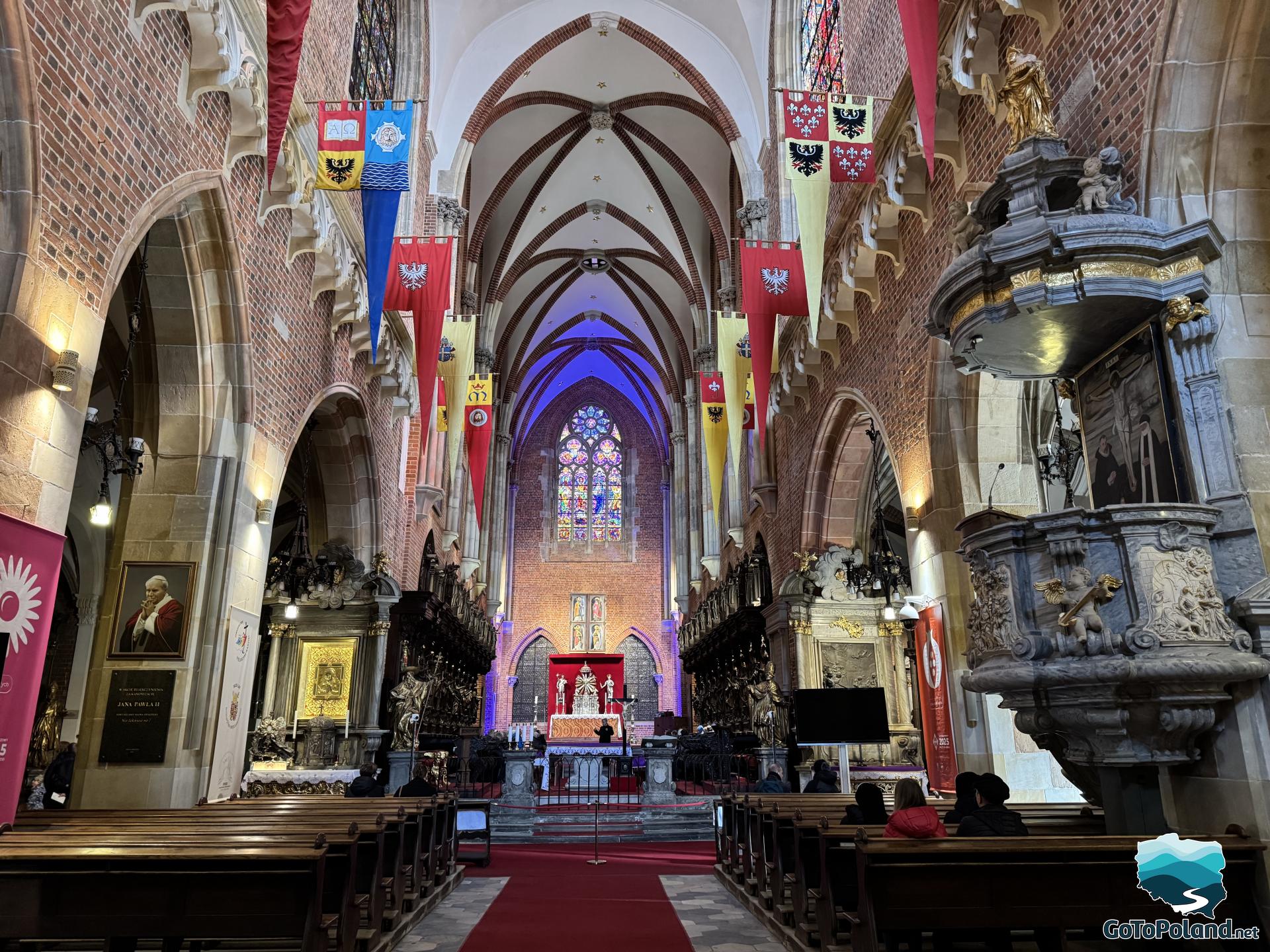
The magnificent stalls with numerous bas-reliefs and stained glass windows show the beauty of the church. The cathedral houses many valuable works of art, including the main altar of St. John the Baptist from 1591, known as the silver altar founded by Bishop A. Jerin. The cathedral is surrounded by a ring of chapels, mostly from the Gothic period. It also has four Baroque chapels for example the chapel of St. Elizabeth and the chapel of Corpus Christi, known as the electoral chapel.
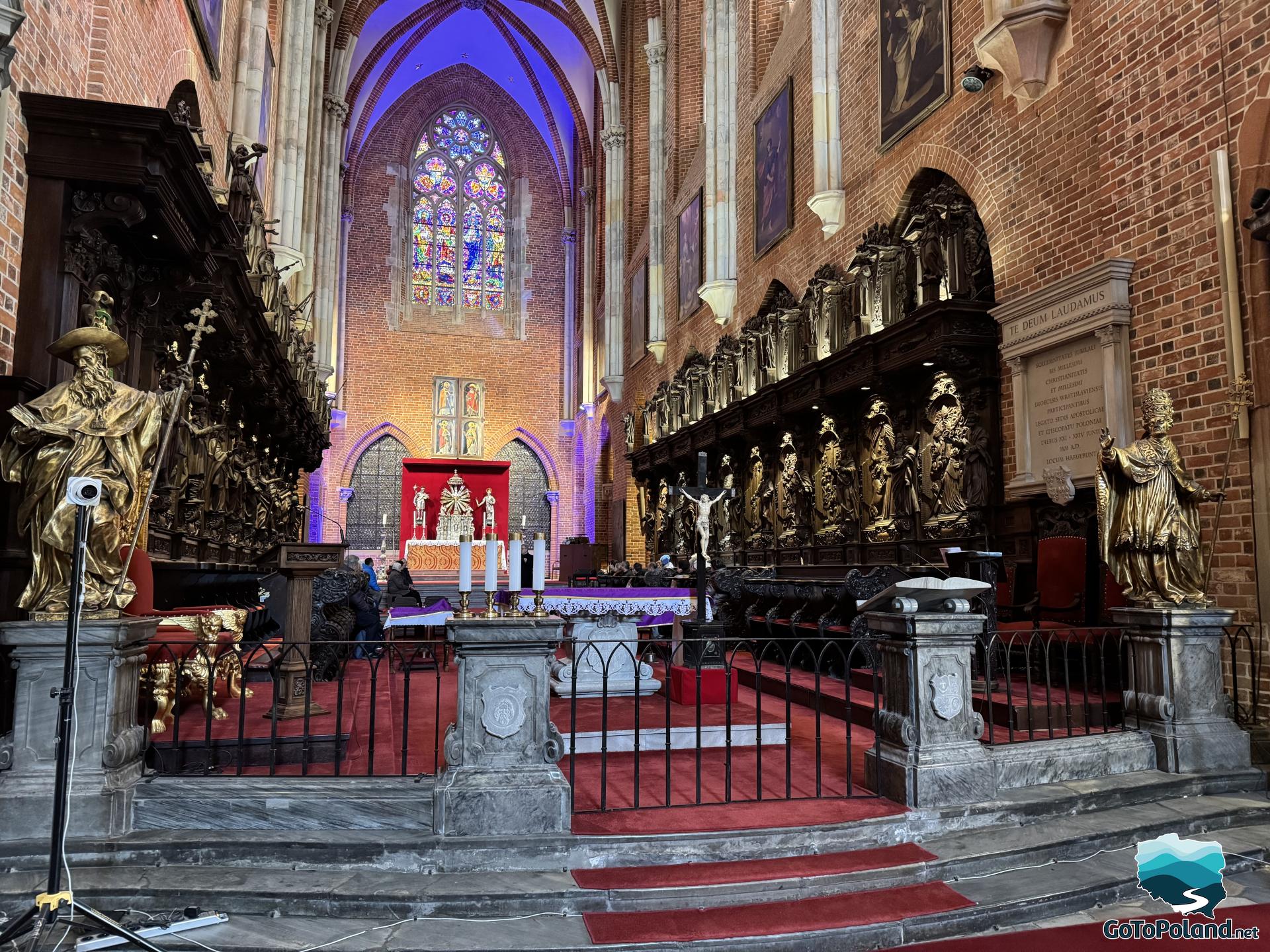
 | 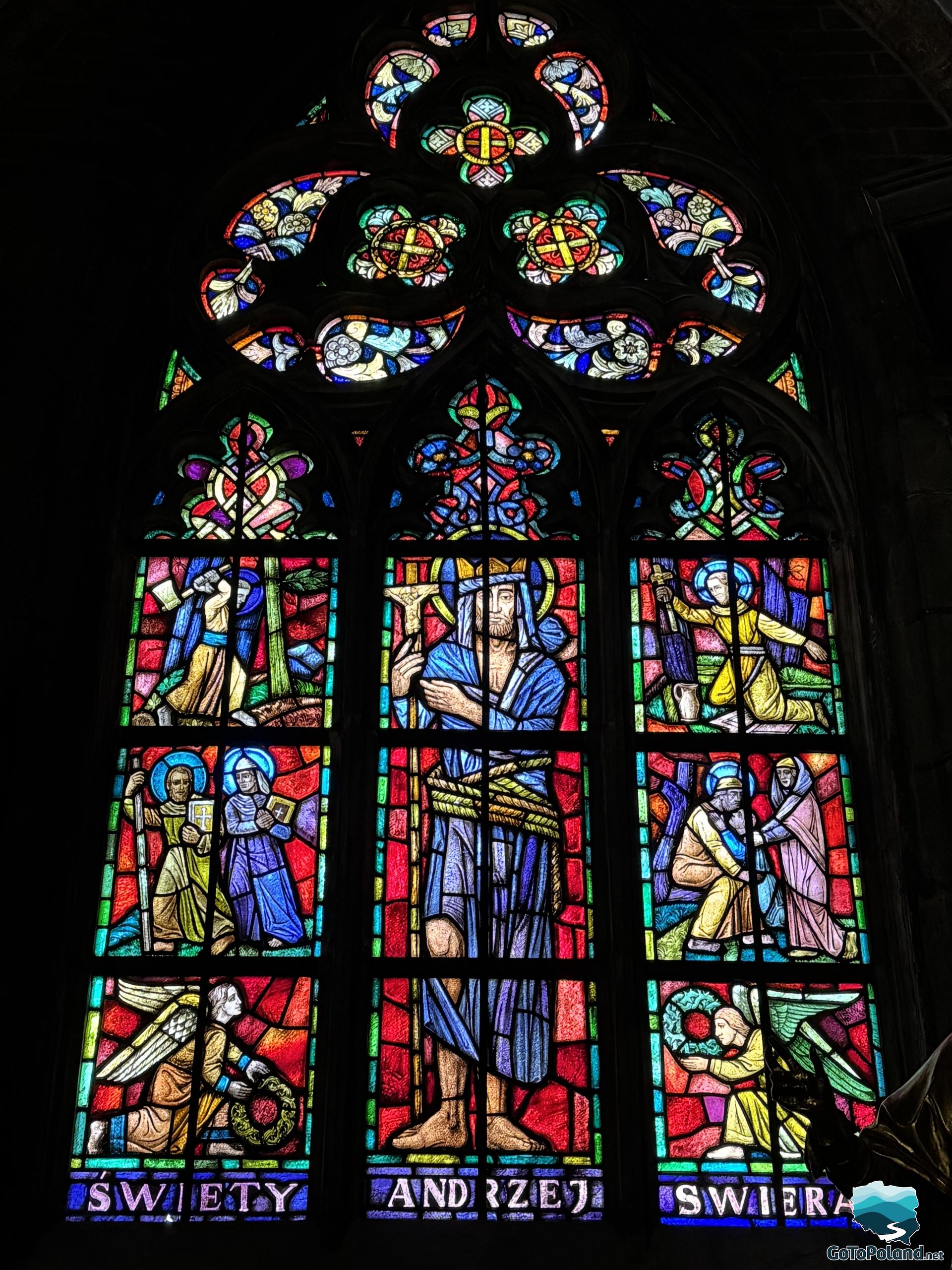 |
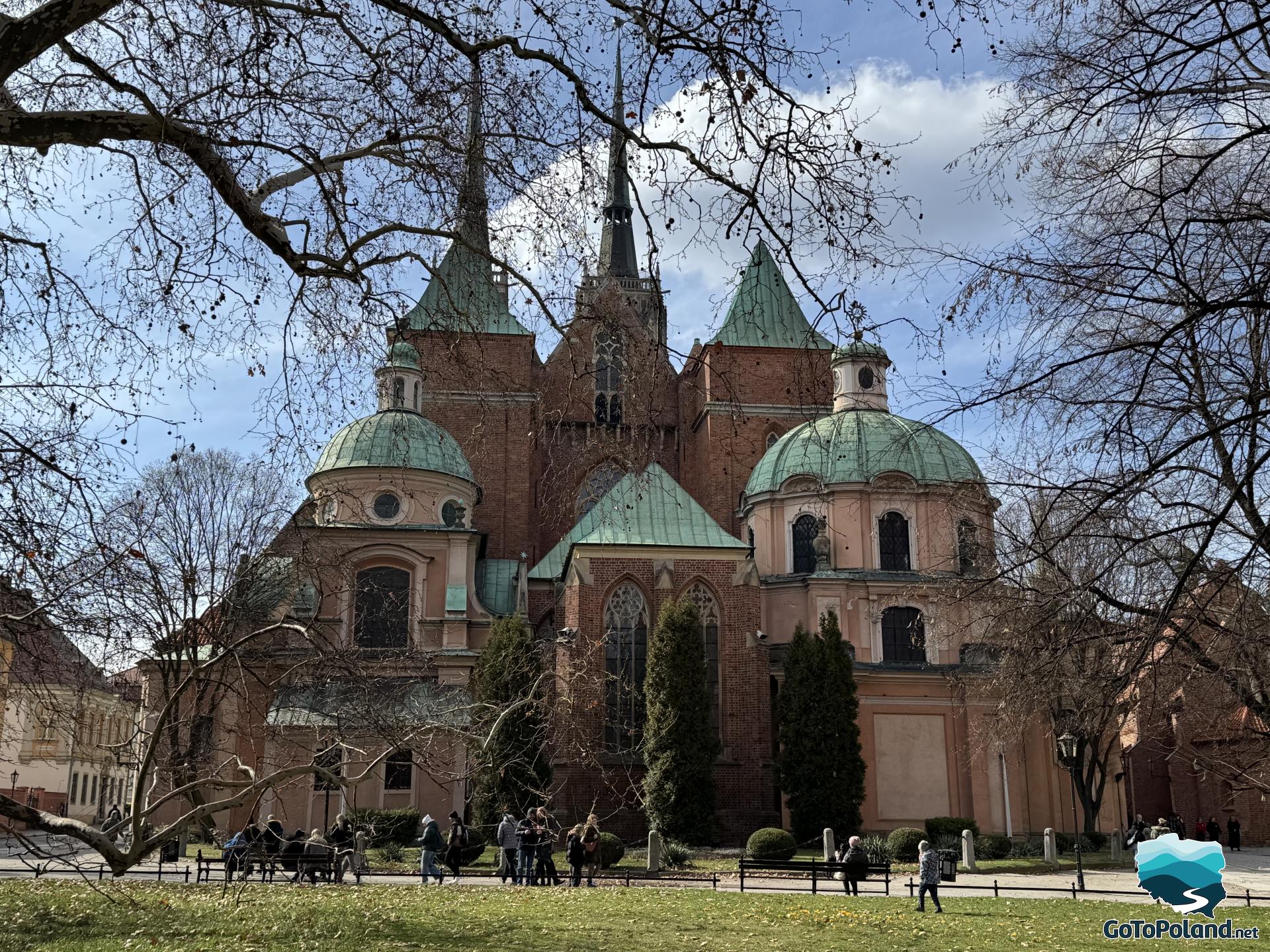
18th century sculpture of St. John of Nepomuk. The monument is made of sandstone, in the Baroque style, on a plan similar to a Greek cross. It is about 9.5 meters high and is the tallest sculpture of Nepomuk in the world.
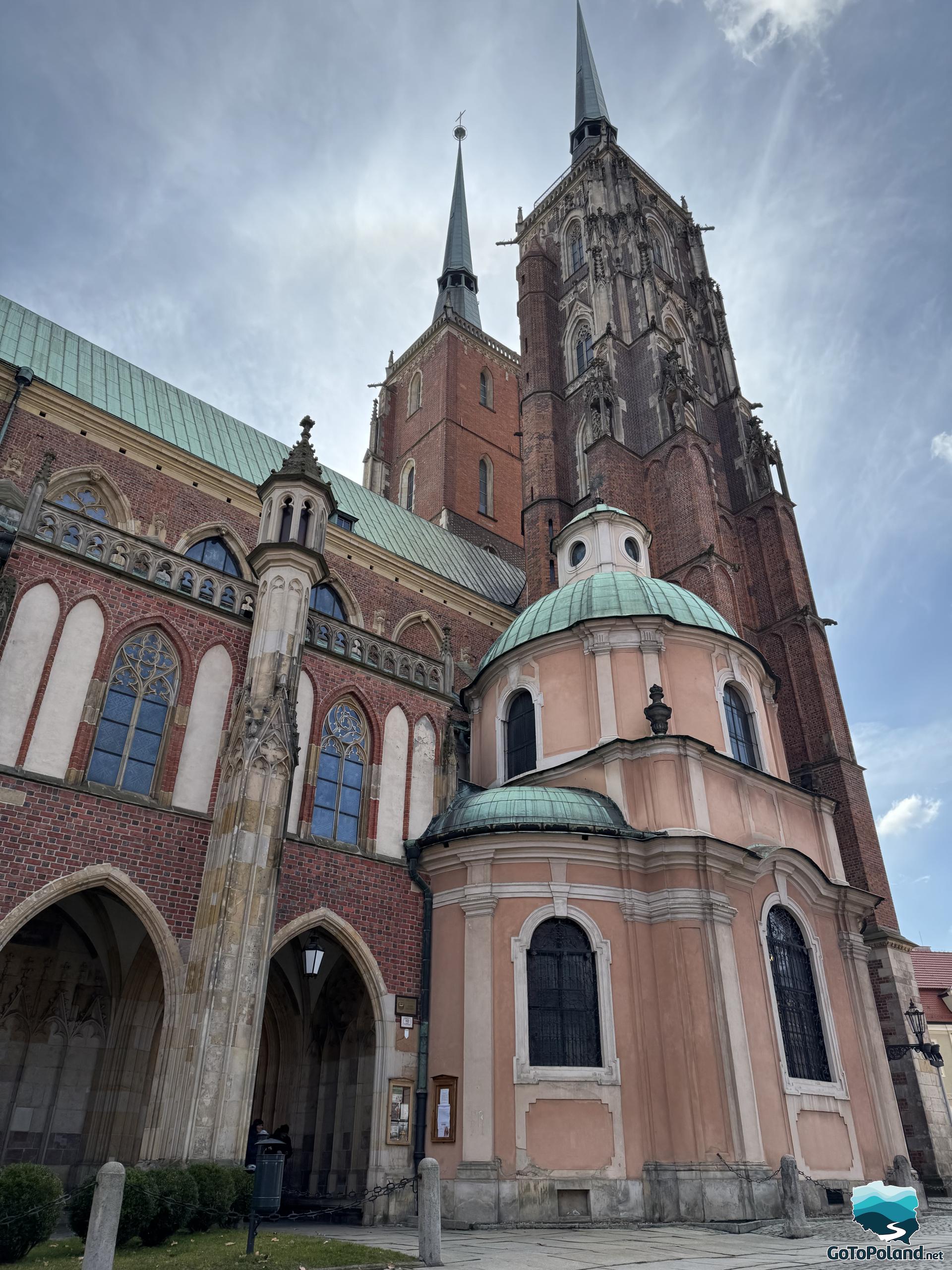 | 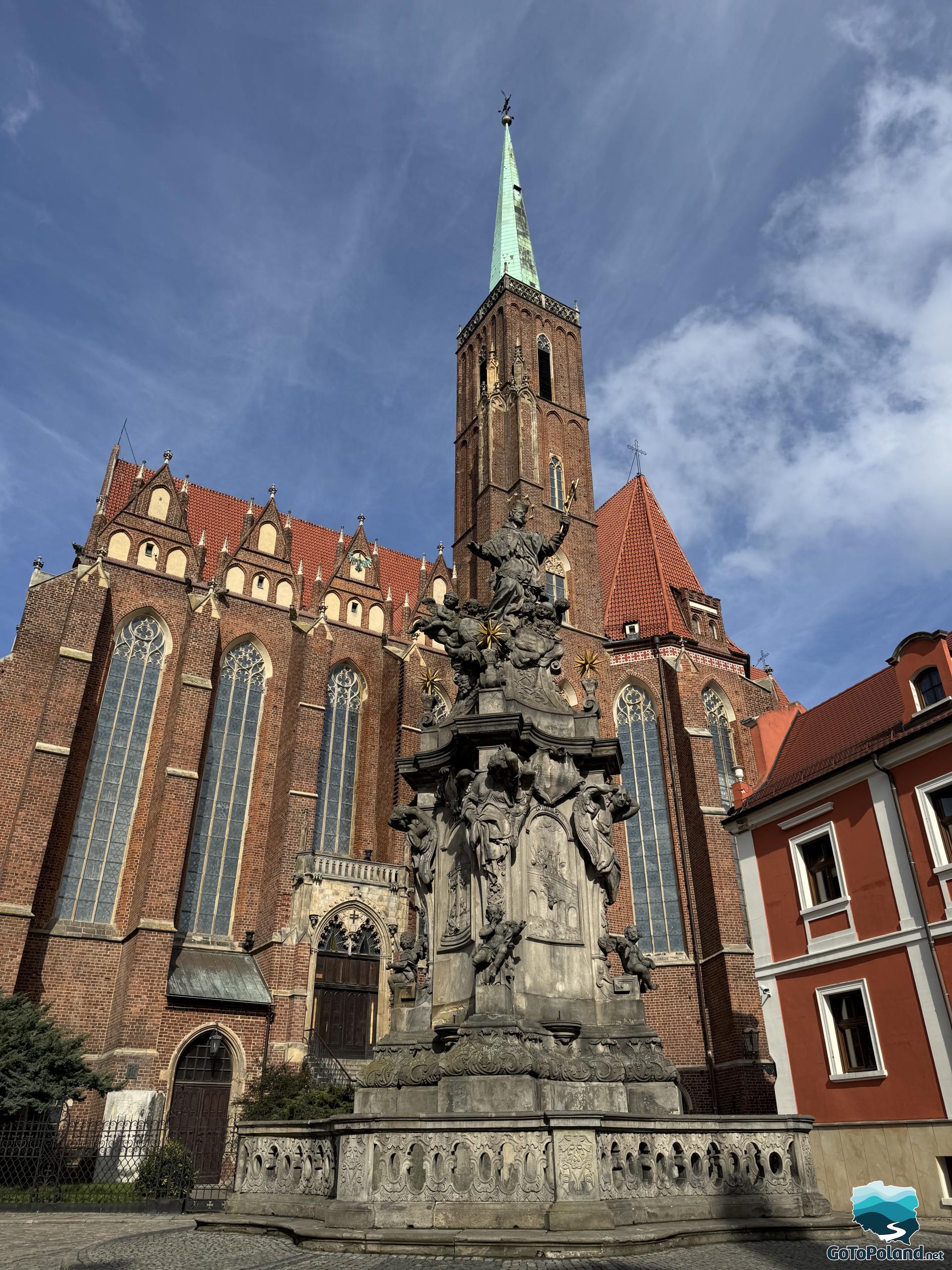 |
How to get to Wrocław

